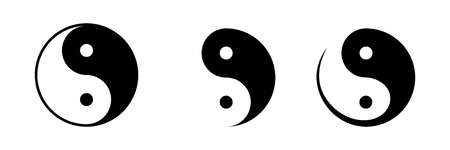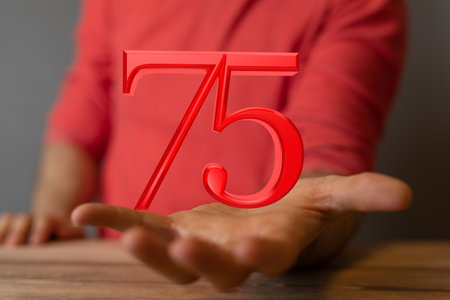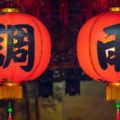1. Introduction to the Chinese Zodiac
The Chinese zodiac is a fascinating and ancient system that continues to capture the curiosity of people all around the world, including many Americans. While its roots are deeply embedded in Chinese culture, the zodiac’s unique blend of history, symbolism, and mythology has made it an intriguing subject in the United States. To better understand how Americans interpret and use Chinese zodiac signs, it’s helpful to start with an overview of what the Chinese zodiac actually is.
Overview of the Chinese Zodiac System
The Chinese zodiac, also known as Sheng Xiao (生肖), is a repeating cycle of 12 years, with each year represented by a different animal sign. Unlike the Western zodiac, which is based on months and stars, the Chinese zodiac follows the lunar calendar and assigns each year to a specific animal. People born in a certain year are believed to share traits with that year’s animal.
History and Symbolic Meanings
The origins of the Chinese zodiac go back over 2,000 years. It is said to have been created during the Han Dynasty (202 BC–220 AD) and was influenced by ancient folk stories and astrology. Each animal in the zodiac carries its own symbolism and personality traits, which are used for fortune telling, matchmaking, and understanding personalities.
The 12 Animal Signs
| Order | Animal Sign | Symbolic Traits |
|---|---|---|
| 1 | Rat | Intelligent, resourceful, quick-witted |
| 2 | Ox | Dependable, strong, determined |
| 3 | Tiger | Courageous, confident, competitive |
| 4 | Rabbit | Gentle, kind-hearted, elegant |
| 5 | Dragon | Energetic, charismatic, ambitious |
| 6 | Snake | Wise, mysterious, intuitive |
| 7 | Horse | Lively, independent, enthusiastic |
| 8 | Goat (Sheep) | Mild-mannered, creative, sympathetic |
| 9 | Monkey | Clever, curious, playful |
| 10 | Rooster | Observant, hardworking, honest |
| 11 | Dog | Loyal, friendly, responsible |
| 12 | Pig (Boar) | Sincere, generous, easygoing |
This system is not just about identifying birth years; it also influences traditional celebrations like Lunar New Year and plays a role in matchmaking and personal fortune-telling. In America today, you’ll often see references to these animal signs in restaurants or during cultural festivals.
2. How Americans Learn About the Chinese Zodiac
Discovering the Chinese Zodiac in Everyday Life
Many Americans first come across the Chinese zodiac in casual and unexpected ways. Unlike traditional Chinese culture, where these signs are often taught at a young age, people in the United States usually learn about them through different channels. Here are some of the most common places and situations where Americans encounter the Chinese zodiac:
Common Sources of Exposure to the Chinese Zodiac
| Source | How It Introduces the Zodiac |
|---|---|
| Chinese Restaurants | Menus or placemats often feature all 12 zodiac animals with short descriptions, sparking curiosity during meals. |
| Popular Culture | Movies, TV shows, and books sometimes mention or feature characters talking about their zodiac signs, making the concept more familiar. |
| Lunar New Year Celebrations | Public festivals or school events introduce zodiac stories, animal parades, and crafts, teaching both kids and adults about their sign. |
| Personal Relationships | Friends or family members with Asian heritage may share traditions or ask about birth years, leading to fun conversations about zodiac meanings. |
| Social Media & Online Quizzes | Online quizzes and social media posts often encourage users to “find your Chinese zodiac sign,” making it a playful activity. |
The Role of Curiosity and Fun
For most Americans, learning about the Chinese zodiac is light-hearted and fun. People might check which animal represents their birth year just for entertainment or use it as an icebreaker at parties. Sometimes, parents help kids find their sign for school projects or Lunar New Year activities. The approach is generally relaxed—few take it as seriously as astrology or personality tests.
Learning Through Food and Festivities
Sitting at a Chinese restaurant and reading about the Dragon or Rabbit on a placemat is a classic introduction for many Americans. Around Lunar New Year, families may attend local parades or cultural fairs where they see dragon dances and learn which animal rules the coming year. These experiences make the Chinese zodiac part of American multicultural life, blending tradition with modern curiosity.

3. American Interpretations and Adaptations
When Americans encounter the Chinese Zodiac, they often bring their own cultural background into the mix. Instead of following traditional Chinese meanings, many people in the United States reinterpret zodiac signs by connecting them with familiar Western ideas about personality and astrology.
Blending Eastern and Western Traits
Americans are used to Western astrology, like horoscopes based on star signs such as Aries, Taurus, or Gemini. When they learn about the Chinese Zodiac, they often compare it directly to these Western signs. For example, someone born in the Year of the Dragon might be told they are bold and lucky, just as a Leo is described in Western astrology. This blending helps Americans relate to the Chinese Zodiac in a way that feels natural for them.
Common Ways Americans Adapt Zodiac Meanings
| Chinese Zodiac Animal | Traditional Traits (China) | Common American Interpretation | Western Astrology Comparison |
|---|---|---|---|
| Rat | Intelligent, Quick-witted | Clever, Resourceful | Gemini (Curious) |
| Ox | Dependable, Strong | Reliable, Steady Worker | Taurus (Persistent) |
| Tiger | Courageous, Confident | Daring, Adventurous | Aries (Bold) |
| Rabbit | Gentle, Quiet | Sensitive, Friendly | Cancer (Caring) |
| Dragon | Ambitious, Energetic | Lucky, Charismatic Leader | Leo (Leader) |
| Snake | Wise, Mysterious | Mysterious, Deep Thinker | Pisces (Intuitive) |
| Horse | Lively, Free-spirited | Outgoing, Fun-Loving | Sagittarius (Adventurous) |
| Goat/Sheep | Mild-mannered, Artistic | Creative, Gentle Soul | Libra (Artistic) |
| Monkey | Clever, Playful | Clever, Entertainer | Aquarius (Inventive) |
| Rooster/Chicken | Hardworking, Observant | Diligent, Perfectionist | Virgo (Detail-Oriented) |
| Dog | Loyal, Honest | Loyal Friend, Trustworthy Partner | Capricorn (Loyal) |
| Pig/Boar | Sincere, Generous | Keeps the Peace, Generous Spirit | Sagittarius (Generous) |
The Role of Pop Culture and Media
American movies and TV shows sometimes feature Chinese Zodiac references in fun ways. For example, characters might mention their zodiac animal at New Year’s parties or use it as a conversation starter. Some companies even create themed products for each zodiac year that appeal to American consumers who enjoy learning about different cultures.
Zodiac as a Personality Test
Many Americans treat the Chinese Zodiac like a personality quiz. They look up their animal sign online or in magazines and discuss which traits fit them best. This casual approach is more about entertainment than strict belief. It’s common to see people mixing both Chinese and Western zodiac descriptions when talking about themselves or their friends.
A Fun Way to Connect
The blend of Chinese Zodiac traditions with American culture creates new ways for people to connect and share stories about themselves. Whether it’s comparing signs at parties or reading annual horoscopes for fun, Americans have adapted these ancient symbols to fit their everyday lives.
4. The Chinese Zodiac in Everyday American Life
How Americans Use the Chinese Zodiac Day-to-Day
The Chinese zodiac has found its way into many aspects of daily life in the United States. While not everyone deeply believes in its meanings, a lot of people enjoy using the zodiac for fun, social connection, and even for personal reflection. Here are some common ways Americans interact with the Chinese zodiac:
Examples in Social Interactions
People often bring up Chinese zodiac signs at parties or casual gatherings, especially around Lunar New Year or when meeting someone from an Asian background. It’s common to ask, “What’s your sign?” as an icebreaker. Many Americans enjoy comparing signs with friends to see if their personalities match the traditional descriptions.
Marketing and Commercial Use
The Chinese zodiac is widely used in marketing campaigns, especially by restaurants, stores, and brands during Lunar New Year. You’ll often see themed decorations, special edition products, and advertisements featuring the animal of the year.
| Area | Example |
|---|---|
| Restaurants | Menus highlight dishes named after the year’s zodiac animal (e.g., “Year of the Dragon Noodles”) |
| Retail Stores | Special discounts or limited-edition items with zodiac symbols |
| Banks & Financial Services | Promotional offers tied to Lunar New Year and zodiac themes |
| Childrens Products | Zodiac-themed toys and books released annually |
Gift-Giving Traditions
The Chinese zodiac influences gift-giving, especially around holidays like Lunar New Year or birthdays. Many Americans give gifts featuring the recipient’s zodiac animal—such as mugs, jewelry, keychains, or greeting cards—as a thoughtful gesture that shows personal attention.
Popular Zodiac-Themed Gifts:
- Zodiac animal plushies for kids and teens
- Personalized jewelry with birth year animals for adults
- Zodiac calendars or wall art for home décor lovers
- Lunar New Year red envelopes with zodiac prints for good luck
Personal Reflection and Identity
Some Americans use their Chinese zodiac sign as a tool for self-discovery. They may read horoscopes or personality traits connected to their sign and reflect on how it fits their own lives. For many, it’s a fun way to explore identity or spark conversations with others who share the same sign.
5. Cultural Misunderstandings and Cross-Cultural Appreciation
When Americans engage with Chinese Zodiac signs, their interpretations are often shaped by Western cultural perspectives. This sometimes leads to misunderstandings, but also opens the door to a deeper appreciation of Chinese traditions.
Common Misconceptions
Many Americans see the Chinese Zodiac as similar to Western astrology, expecting daily horoscopes or personal predictions based on their birth year animal. However, the Chinese Zodiac is more deeply rooted in tradition, often linked to family values, major life events, and long-term cycles rather than daily advice. Some may also mistakenly believe everyone born in the same year shares the same personality, overlooking the influence of other elements like the Five Elements (Wood, Fire, Earth, Metal, Water) in Chinese metaphysics.
| Misconception | Reality |
|---|---|
| The Zodiac gives daily predictions like horoscopes. | The Zodiac focuses on yearly cycles and character traits. |
| All people with the same animal sign have identical personalities. | Other factors like elements and time of birth matter too. |
| The Zodiac is just for fun or fortune-telling games. | It’s a respected tradition with cultural and family significance. |
Respectful Engagement
As interest in Chinese culture grows in the U.S., many Americans are learning to approach the Zodiac with respect and curiosity. Cultural festivals such as Lunar New Year celebrations now often include educational workshops that explain Zodiac meanings, stories, and customs. People are encouraged not just to find out their own Zodiac sign for fun, but also to understand its place in Chinese heritage and its role in family and community life.
Tips for Respectful Engagement
- Avoid stereotypes or jokes about Zodiac animals—each has deep meaning in Chinese culture.
- If you’re curious, ask respectful questions or join community events where you can learn from people with direct cultural experience.
- Use reputable sources when reading about the Zodiac instead of relying only on memes or pop culture references.
The Growing Appreciation for Chinese Traditions
The popularity of the Chinese Zodiac in American pop culture—from themed parties to personalized gifts—shows a growing appreciation for cross-cultural sharing. Educational programs in schools and museums help deepen understanding beyond surface-level stereotypes. Many Americans now see celebrating the Lunar New Year or learning about their Zodiac animal as ways to connect with friends and neighbors who have Asian heritage, fostering stronger communities through shared traditions.


